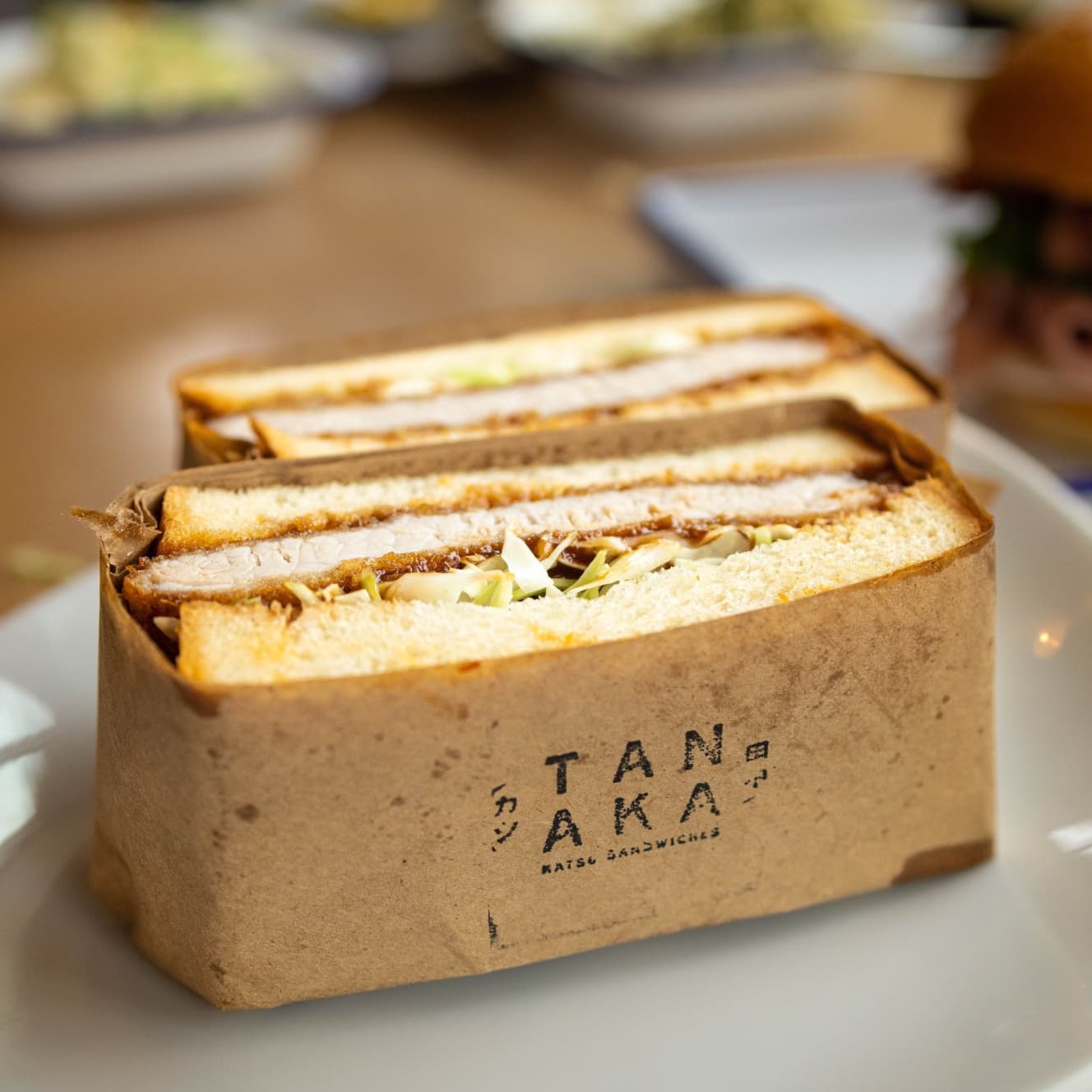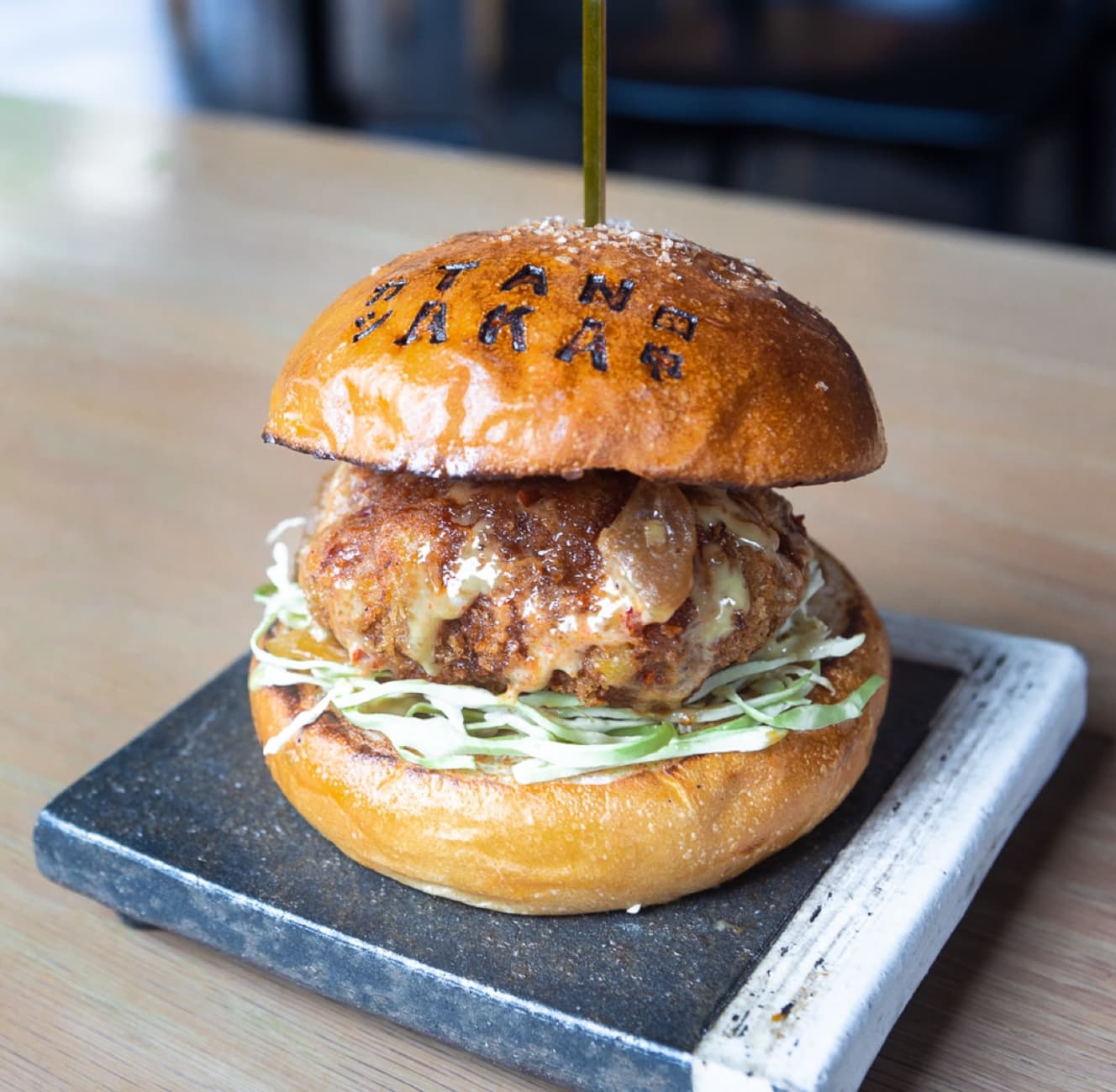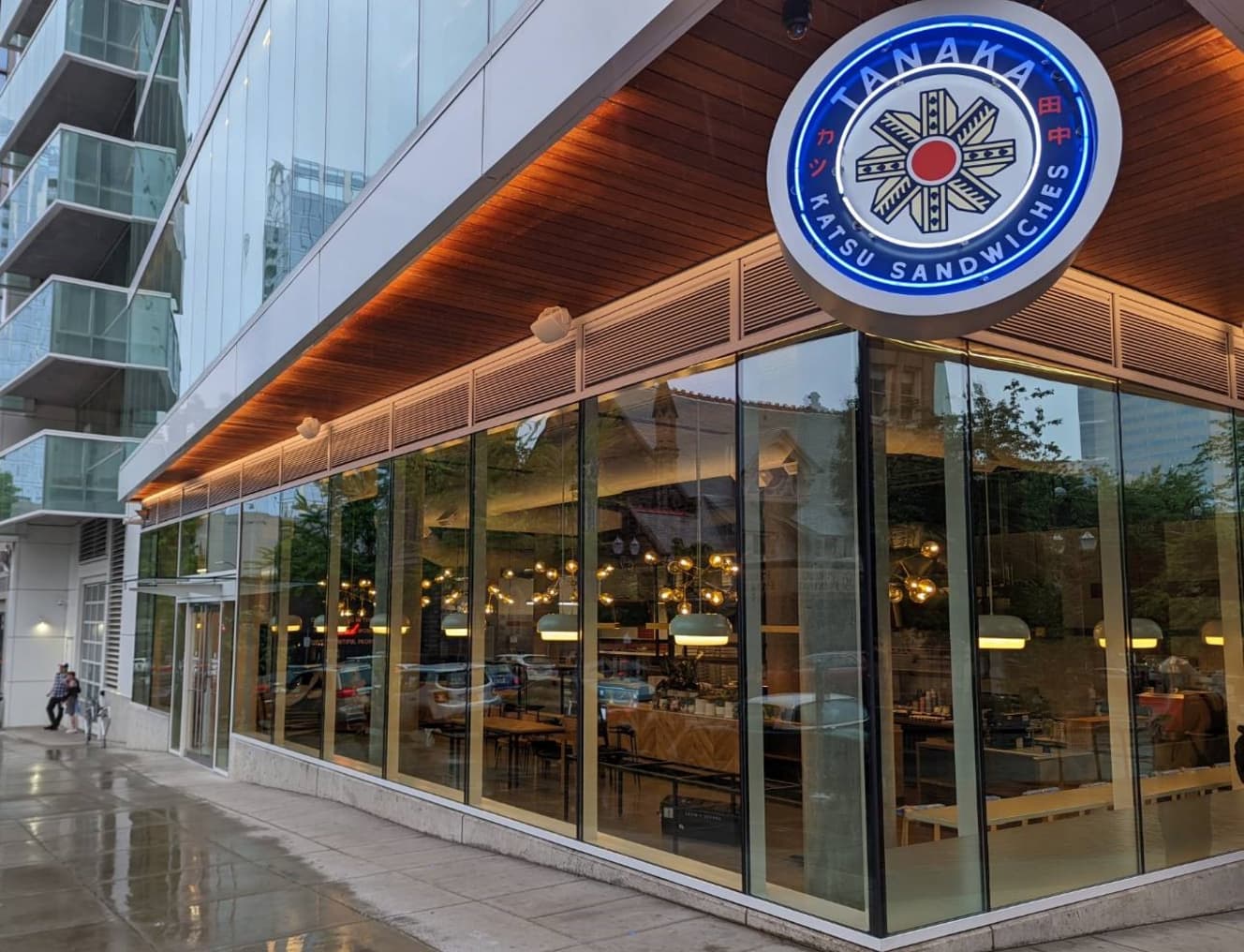New Brand “Tanaka” by Kushikatsu Tanaka Expands Overseas
New Kushikatsu Tanaka Brand to Open in Portland, USA.
TANAKA, a new brand of kushikatsu restaurant, opened in Portland, USA on Saturday, June 25, 2022. TANAKA INTERNATIONAL INC., a locally established subsidiary, will operate the new restaurant.
The new “TANAKA” is not a traditional kushikatsu izakaya, but a café featuring freshly fried katsu sandwiches and menchi-katsu sandwiches made with milk bread baked in the restaurant, as well as a variety of home-baked breads and cakes and delicious coffee.

“Kushikatsu Tanaka” has always seized with the changing times.
Kushikatsu Tanaka was founded in 2008 in Setagaya, Tokyo. In 2018, the company was one of the first izakaya chains to make its restaurants non-smoking. It has succeeded in attracting consumers, thereby broadening its customer base.
In the COVID-19 crisis, the izakaya chain also began using smartphones for non-contact ordering, changing the container of sauces and selling frozen kushikatsu on its e-commerce site for those who cannot visit its restaurants. In 2020, when demand for izakaya (Japanese-style pubs) began to decline, the company began developing “Toritama,” a chicken and egg-themed restaurant featuring “oyakodon” and “omelet rice” as its mainstay products. Furthermore, in 2021, in response to the growing health crisis, “Kushikatsu Tanaka” has continued to grow while always keeping up with the changes of the times, such as by renewing the batter of its kushikatsu to one with 40% less sugar content.

Why Are Japanese Food Service Companies Going Overseas?
Why is “Kushikatsu Tanaka” taking up the challenge of entering the U.S. market again? The reason lies in the global economic situation. Japan’s prolonged recession has made the country inexpensive by global standards. Especially in the area of food, it is safe to say that Japan is a country where one can enjoy inexpensive, high-quality food that is unparalleled in the world. On the other hand, demand for Japanese food is increasing year by year overseas, and the same food as in Japan can be offered at higher selling prices in other countries. It is only natural that they would turn to the booming overseas market rather than to Japan, where consumption has cooled due to the recession and where the population is expected to age further in the future.
Many of Japan’s restaurant chains have already expanded overseas. Curry House CoCo Ichibanya, which operates 1,262 stores in Japan, began opening stores overseas in 1994. It has 183 stores in 13 countries and regions, mainly in the United States, China, and Thailand (as of the end of February 2022). The Ippudo ramen chain opened 277 stores in 15 countries and regions, including Asia, Oceania, and Europe (as of the end of March 2022), starting with the opening in the United States in 2008, far exceeding the 129 stores in Japan.
In addition, the beef bowl chain Yoshinoya has opened a string of stores in the U.S., China, Taiwan, Malaysia, Singapore, and other regions, and has grown to 974 stores (as of the end of February 2022), which is close to the 1,190 stores in Japan, and is aiming for 1,500 stores overseas in the future. Furthermore, “Toridoll Holdings,” which operates the “Marugame Seimen” udon chain, has accelerated its overseas expansion by acquiring popular overseas restaurant chain brands one after another. The company aims to open approximately 1,500 stores in Japan and 4,000 stores overseas.
Japanese “Katsu” is sweeping the world.
“Kushikatsu Tanaka” also opened an experimental restaurant in Los Angeles in 2014, seeking to expand its chain overseas, and later opened restaurants in Hawaii and Singapore, but withdrew from both. In order to try again, Kushikatsu Tanaka Holdings decided to create a new type of business, a café brand, because izakaya (Japanese-style pub) restaurants, which mainly serve alcohol, are difficult to accept in the U.S. due to cultural differences.
The reason behind the decision to feature katsu sandwiches as the signature menu item is the Katsu blare overseas. Japanese cuisine, including Japanese food, is very popular in the U.S., and sushi and ramen in particular have penetrated the American food culture and are evolving in their own unique borderless worldview. Now, katsu sando is gaining popularity as a new Japanese food culture, especially in the U.S. and Europe.
The katsu sando was first sparked in Sydney, Australia, and by 2019 it had made its way to the U.S. In New York City, restaurants specializing in katsu sandos have become popular, and the number of restaurants offering katsu sandos is increasing. In the United Kingdom, France, and other countries, not only katsu sandwiches but also katsu curry are gaining popularity. “Katsu”, which originated in Japan, has become a popular food all over the world.


From skewers to sandwiches, the Katsu has changed its form and is now taking on the world!
Many of the katsusandos that are now popular in Europe and the United States were created by local chefs who were influenced by Japanese fried pork cutlets and katsu sandwiches. Kushikatsu Tanaka, which has spread kushikatsu culture in Japan, cannot afford to lose to a foreign country in its specialty, katsu.
The sauce for the cutlet sandwiches at TANAKA, which opened in the U.S., is based on a recipe that has been a favorite at Kushikatsu Tanaka for many years and is reproduced using plant-based ingredients, with no chemical seasonings, to make it vegan-friendly. The bread crumbs used for the cutlets are also made from homemade bread. In addition to pork, several types of sandwiches are available, including chicken, fish, beef, and even vegan sandwiches, to meet the needs of the overseas katsu sando market. Also, unlike kushikatsu, the sandwiches are suitable for take-out or one-handed eating outside, which would be in line with Western food culture.
Can Japanese katsu sandwiches really compete with katsu sando in the West? We will keep our eyes on this new challenge by Kushikatsu Tanaka.
Interview and text: Rikiya Yamaji
Food journalist and ramen critic. Author of "Yahoo! News Personal" / Author of "Tokyo Nostalgic Ramen" and other books / Active in various media such as TV, magazines, and websites, while loving "food where you can see the maker's face" and thinking about "why the food is delicious.
